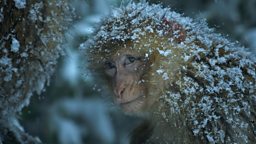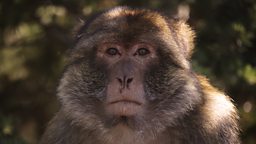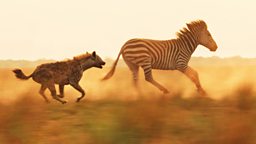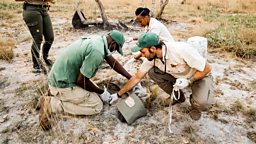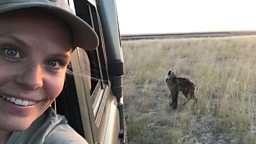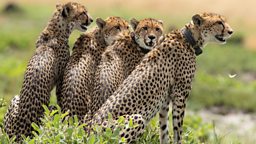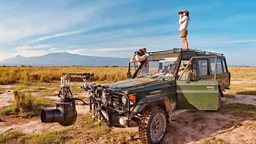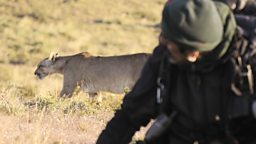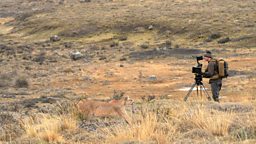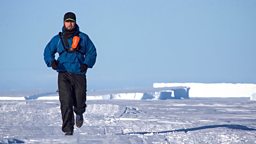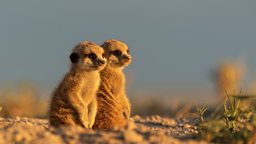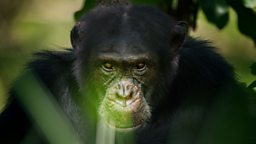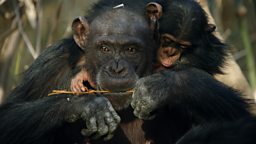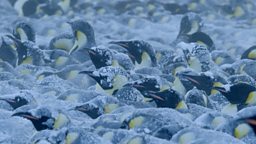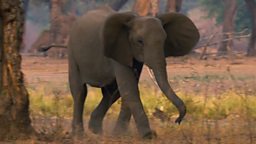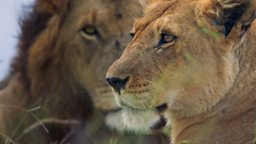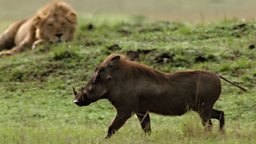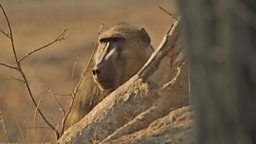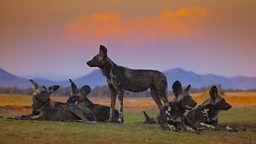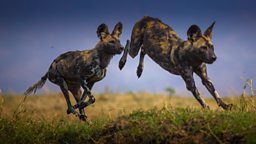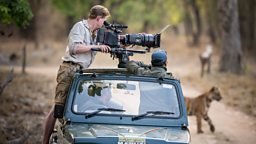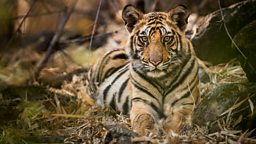Image gallery: Filming Dynasties
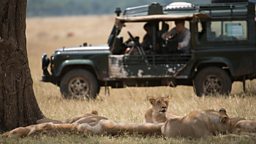
Lions are one of the most majestic animals on the plains of the Masai Mara.
The open-sided vehicle gave the crew excellent views of the lions but did little to protect them from the heat!
However, they also have a penchant for sleeping, sometimes being awake for just 4-5 hours in a day!
Whilst Charm and the Marsh Pride frequently slept in the shade of a tree or termite mount, the film crew had to endure hours in the heat of the equatorial sun just watching the lions sleep. The open-sided vehicle gave the crew excellent views of the lions but did little to protect them from the heat!
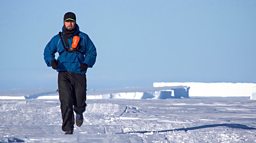
In order to film the lifecycle of the Emperor penguins in Antarctica the crew had to live on the frozen continent for nearly 11 months.
by the end of the shoot he was fit enough to attempt an Antarctic marathon
Despite getting plenty of exercise pulling heavy sleds of equipment, there were times when they were trapped inside the base by the howling winter storms outside.
To keep fit, Director Will Lawson, pictured, began a pre-breakfast fitness regime in the base gym. Such was his enthusiasm, that by the end of the shoot he was fit enough to attempt an Antarctic marathon.
Running in sub-zero temperatures in multiple layers of clothing and carrying an emergency satellite phone, he managed to complete the marathon in 5 hours 36 minutes 22 seconds. Not bad!

Tigers are notoriously elusive animals to see and film and although the tigers of Bandhavgarh are well habituated, the crew often struggled to find them.
Seeing this privileged view of the tigers was always a delight for the entire crew
To keep track of the tigers around their territory the crew used camera-traps.
Most of the time, they recorded footage of the other jungle inhabitants. Monkeys were regular visitors to the pools, as were chital deer and birds.
Occasionally though, the crew would check the camera-traps and find Raj Bhera or one of the cubs. Seeing this privileged view of the tigers was always a delight for the entire crew, especially for the expert guides and drivers who rarely see such intimate shots of tigers that they spend so long looking for.
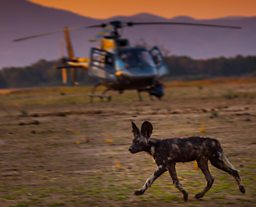
The painted wolves of Mana Pools, Zimbabwe, require vast territories in which to flourish.
Ranging over such large areas presented the crew with difficulties in finding them
Ranging over such large areas presented the crew with difficulties in finding them, but also keeping up with their often lengthy hunts.
On one shoot, the camera team employed a gyro-stabilised camera system mounted on a helicopter to get aerial views of the painted wolves out hunting.
Tait and Blacktip’s packs were so well habituated to humans that they were not at all concerned about the presence of a helicopter that had landed in their territory.
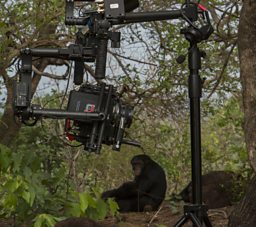
In Senegal, the team followed a group of chimpanzees, lead by an alpha male called David. Unlike other chimpanzee groups that live in dense forests, the Fongoli chimps inhabit a more open, mixed habitat.
With more space for the crew to move around in, they could use a camera gimbal to move alongside the chimpanzees.
With more space for the crew to move around in, they could use a camera gimbal to move alongside the chimpanzees.
The camera rig, pictured on it’s stand whilst not in use, stabilised the shots and allowed the cameraman Mark MacEwen to film extraordinary behaviour in a more intimate and cinematic way.
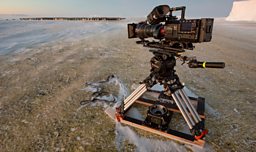
For the team on Antarctica, improvisation was a necessity.
the crew had to fashion some makeshift tripod skis
Working permanently on the ice meant that they had to come up with some novel filming techniques. Instead of simply carrying and installing the tripod straight onto the ground, the crew had to fashion some makeshift tripod skis out of thick plastic to move it around the ice.
This also prevented the black feet of the tripod warming up from the Sun’s faint rays and melting the ice below.
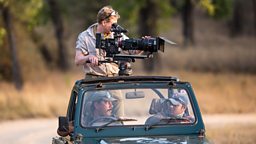
For cameraman John Brown, filming tigers was one of the toughest jobs he’s faced.
At the furthest zoom of his 1000mm lens, he could even see the movement caused by his heartbeat
The tigers were hard to find and temperatures were often over 40oC in the summer. But sometimes it’s the smallest things that are the biggest challenge. Unable to film from outside the vehicle, John had to spend over 10 hours each day filming from the small 1.5m² flatbed of a 4x4 jeep.
These lightweight cars are perfect for bouncing along the bumpy roads but their soft suspension meant that when stationary, the smallest movement could mean wobble in his shots.
At the furthest zoom of his 1000mm lens, he could even see the movement caused by his heartbeat. With two other people in the car, this made getting steady shots extremely difficult. Luckily thought, his expert guides, Digpal and Lala, were masters at keeping motionless, even when an exciting hunt was unfolding!
